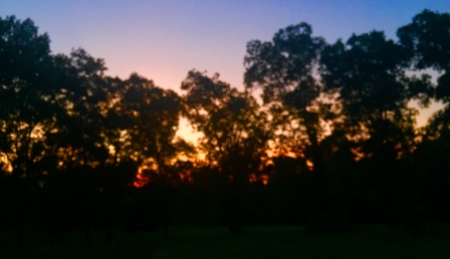
While sitting out in Creation Girl and my work-in-progress grape arbor on the banks of the West Chickamauga Creek at Spirit Tree Farms, I had some thoughts about sitting in nature. Rather than wait until I was at my computer, I picked up my phone and did a voice recognition verbal riff. A new prose-writing method for me, but one I could get used to! It’s quick and effective, and I hope captures the message well.
Sitting in nature requires putting your phone away, or maybe not even bringing it. It means laying your tools down, including pulling your snippers out of your pocket and throwing them onto the ground, to better be prepared for the messages Nature is going to send you.
Sitting in Nature Means Not Seeing So You Can Experience
Sitting in Nature means looking around and, instead of seeing privet that needs to be pulled, or wild grapevines that need to be trellised, or invasive grasses that need to be burned, or ironweed seeds that need to be gathered, just sitting. Listening. Feeling. Sensing.
Taking this deliberate time, making this purposeful effort of rest and nature observation and connection means hearing and feeling the negative ions of the distant creek running over the rocks placed there as a fishing weir by pre-contact native residents of this land. Sure, these Ancient Ones worked, but they also stopped, looked, listened, felt, learned, and taught.
Like us, they watched the late season butterflies flit among the few goldenrod and burn weed and ironweed blooms still available. They no doubt marveled at the bright blood-red stalks of pokeweed, nearly spent, holding on to the last vestiges of purple berries, to provide fruit throughout the winter swaying with the late autumn breeze.
These people of the land saw that same breeze give dead and dying ironweed stalks a shake, spreading their seeds like salt from a shaker. They felt the late Autumn breeze and wondered at its warmth and smiled at its gentle caress. They looked at the skyline of multi-hued deciduous trees and probably put that sight in their memory banks for later on, when they would make blankets and paint paintings showing those same Earth tone colors.
Developing Symbiotic Relationships With Nature And Families
Undoubtedly, these nature observation experts listened to the squirrels chattering, gathering and husking hickory nuts and black walnuts, preparing for the winter. In the Indigenous tribal culture, the older wise ones probably showed the younger ones which plants to gather. Then, the younger ones, full of life and energy and supple bodies able to bend and lift, used the old ones wisdom and knowledge to quickly harvest what the tribe needed. The old ones sharing that knowledge freely, and accepted the youth’s gift of energy and work, a symbiotic relationship in a group of humans mirroring the symbiotic relationships found throughout nature.
Throughout the entire Nature observation and gathering process, either the elderly or the young — or perhaps both — felt the presence of the Creator, the Great Spirit. Together, they shared the joy found in sitting with and being enveloped by Nature. Maybe the sun caressed their shoulders as they munched on a foraged turkey tail or a goldenrod blossom. Or when they discovered and shared and relished a late-fruiting passion flower, they felt joy, and they gave thanks. And when they went to work again after sitting, resting, and feeling, that Nature joy stayed with them, so work was no longer work and drudgery, but instead a joint celebration with each other, with the plants and animals all around them, like dancers separate but in harmony, swaying and moving through creation itself.
We can learn much from the Ancient Ones. We should mirror that dance with Nature. Let’s make an effort to put down our tools and technology. Let’s take the time to find nature joy today, ourselves. Because, if we let it, if we spend time sitting in Nature, the energy we get and gather to us stays with us, lifts us, buoys us, and carries us through life.
An updated, more in-depth copy of this is on our Spirit Tree Farms blog.


 David Kuhns is a web content writer and communications / marketing consultant. Single for several years, his advice is based on (sometimes painful) first-hand experience, mistakes he’s made, and discussions he’s had with hundreds of divorced, dating singles.
David Kuhns is a web content writer and communications / marketing consultant. Single for several years, his advice is based on (sometimes painful) first-hand experience, mistakes he’s made, and discussions he’s had with hundreds of divorced, dating singles.